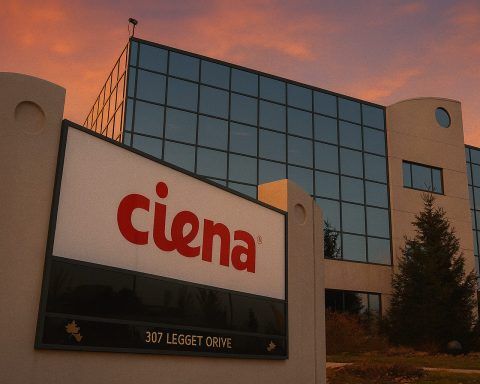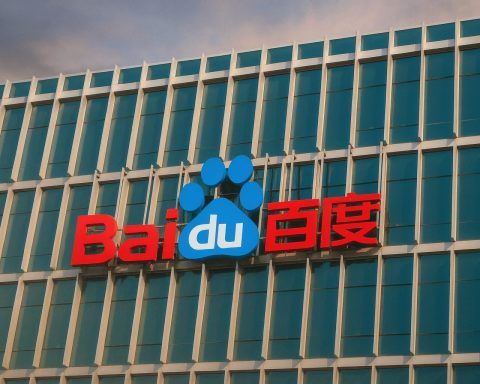Published: November 24, 2025
Ticker: Bristol Myers Squibb Company (NYSE: BMY)
Key takeaways
- BMY stock jumped about 4.3% today, trading near $48.24 in afternoon action, after fresh excitement around Factor XIa blood‑thinner drugs and Bristol Myers Squibb’s own candidate, milvexian. [1]
- The company announced a hematology‑focused virtual investor event on December 11, 2025, adding another near‑term catalyst for the shares. [2]
- Despite today’s pop, BMY’s total return is still roughly ‑14% year‑to‑date, badly trailing the S&P 500’s ~13.6% gain on a total‑return basis. [3]
- Bristol Myers Squibb beat Q3 2025 earnings expectations, delivered 3% revenue growth to $12.2 billion, and updated 2025 guidance to revenue of $47.5–$48.0 billion and non‑GAAP EPS of $6.40–$6.60. [4]
- At today’s price, BMY offers an annual dividend of $2.48 per share (about a 5%+ yield) and trades at a mid‑teens trailing P/E and single‑digit forward P/E, reflecting both income appeal and ongoing execution risk. [5]
This article is for informational purposes only and does not constitute investment advice or a recommendation to buy or sell any security.
BMY stock today: a 4% move that stands out
Bristol Myers Squibb shares climbed sharply on Monday, with BMY changing hands around $48.24, up roughly $1.99 from Friday’s close near $46.25—a gain of about 4.3% on the day.
Intraday, the stock traded between roughly $46.39 and $48.63, on volume in the low‑ to mid‑teens of millions of shares—broadly in line with recent average daily trading activity, which runs around the mid‑teens millions according to several market data providers. [6]
Even after today’s bounce, BMY sits well below its 52‑week high around $63.33 and only moderately above its 52‑week low near $42.52, underscoring how bruised the stock remains versus where it traded in early 2024 and 2023. [7]
Broader equity markets were also higher Monday, with the S&P 500 and Nasdaq both in positive territory, but BMY’s move outpaced the major indices, putting the stock among the stronger large‑cap healthcare performers on the day. [8]
What’s powering the rally? Factor XIa momentum and milvexian
The immediate spark for today’s move appears to come from renewed enthusiasm around the Factor XIa (FXIa) inhibitor class of blood‑thinning drugs.
A MarketWatch report highlighted that Bayer’s stock jumped sharply after its stroke drug asundexian showed success in a large Phase 3 trial for secondary stroke prevention—reducing the risk of repeat strokes without significantly increasing major bleeding. That news also lifted Bristol Myers Squibb shares by about 4%, as investors drew a positive “read‑through” to BMY’s own FXIa inhibitor milvexian, which is being developed for similar indications. [9]
In parallel, Cantor Fitzgerald reiterated its Neutral rating and $45 price target on BMY, but with a notably more constructive tone on milvexian. The firm cited “tangible evidence” that FXIa inhibition can reduce thrombosis while preserving hemostasis, strengthening confidence in milvexian’s secondary stroke prevention program and its potential in atrial fibrillation, where lowering bleeding risk remains a key challenge. [10]
Cantor described the milvexian developments as “a needed win” for Bristol Myers Squibb after several setbacks in the class and highlighted two key factors that will determine whether today’s sentiment shift sticks:
- Upcoming Cobenfy ADEPT‑2 data expected by year‑end 2025.
- Investors’ willingness to “underwrite increased odds of success” for milvexian’s atrial fibrillation trial. [11]
The positive FXIa backdrop, combined with the perception that BMY’s shares have been beaten down and may be undervalued relative to earnings and dividend power, created a potent recipe for today’s pop.
New catalyst: hematology‑focused investor event on December 11
Adding to the constructive news flow, Bristol Myers Squibb announced that it will host a hematology‑focused virtual investor event on Thursday, December 11, 2025, shortly after the American Society of Hematology (ASH) Annual Meeting and Exposition. [12]
According to the company, the webcast—scheduled to begin at 9:00 a.m. ET—will:
- Highlight key hematology programs in the pipeline.
- Provide an overview of BMY’s hematology development strategy.
- Review recent clinical data in blood cancers and related indications. [13]
Materials and a replay will be available on the firm’s investor relations website. For investors, events like this are important because they can:
- Clarify how much future revenue the hematology portfolio could contribute.
- Update expectations around timelines for pivotal trials and potential approvals.
- Offer a better view of how BMY plans to offset patent cliffs in its legacy portfolio.
Given that hematology/oncology assets make up a significant slice of Bristol Myers Squibb’s growth story, the December event is likely to be watched closely by both bulls and skeptics.
Fundamentals: Q3 2025 beat and updated guidance
BMY’s latest quarterly numbers, reported on October 30, 2025, help explain why some investors see value despite the stock’s weak multi‑year chart.
From the company’s third‑quarter 2025 earnings release: [14]
- Total revenue:
- $12.2 billion, up 3% year‑over‑year (2% excluding currency).
- Growth portfolio revenue:
- $6.9 billion, up 18%, driven by newer products like Opdivo, Yervoy, Reblozyl, Camzyos, Breyanzi, Zeposia, Opdualag, and Sotyktu. [15]
- Legacy portfolio revenue:
- $5.4 billion, down 12%, reflecting ongoing loss‑of‑exclusivity (LOE) for Revlimid, Pomalyst, Sprycel, Abraxane and other mature brands. [16]
- GAAP EPS:$1.08
- Non‑GAAP EPS:$1.63, which beat consensus estimates of around $1.52 per share. [17]
Crucially, Bristol Myers Squibb updated its 2025 outlook, now guiding to: [18]
- Total revenue: approximately $47.5–$48.0 billion.
- Non‑GAAP EPS:$6.40–$6.60, inclusive of about $0.80 per share of acquired R&D charges and licensing income.
Some institutional investors have praised the Q3 beat while flagging concern that earnings guidance has been pressured by one‑time R&D charges and LOE headwinds, which can make the trajectory look less smooth even as the growth portfolio performs well. A recent hedge‑fund letter cited by Insider Monkey noted that while growth products like Opdivo, Reblozyl and Camzyos are gaining traction, the company’s EPS guidance was trimmed due to these factors. [19]
The takeaway: operationally, BMY is executing reasonably well, but the mix shift from aging blockbusters to newer launches is still a work in progress.
Valuation snapshot: high dividend yield, modest P/E
Today’s jump still leaves BMY trading at valuation levels that many investors consider “value stock” territory.
Based on recent market data: [20]
- Share price (today): ≈ $48.24
- Market cap: around $94 billion.
- Trailing P/E: roughly 15–16x earnings.
- Forward P/E: around 7.5x based on consensus 2025 estimates.
- 50‑day moving average: about $45.3.
- 200‑day moving average: around $49–49.5.
On the income side, BMY continues to be a notable dividend payer:
- The company currently pays a quarterly dividend of $0.62 per share, or $2.48 annually. [21]
- At today’s price near $48, that works out to an indicated yield just above 5%, making BMY one of the more generous large‑cap healthcare dividends. [22]
This combination of a high single‑digit forward earnings multiple and a 5%+ yield is why you’ll often see BMY show up on lists of value or income‑oriented stocks, even as the stock remains unpopular with momentum‑focused traders. [23]
How BMY has performed vs the S&P 500
Despite today’s enthusiasm, long‑term shareholders are still underwater:
Independent total‑return trackers show that, as of late November 2025: [24]
- BMY’s year‑to‑date total return is roughly –14%, including dividends.
- The trailing 12‑month total return is about –16–17%.
- Over 3 years, BMY’s total return is down more than 30%, and 5‑year returns are slightly negative.
By contrast, the S&P 500 Total Return Index is up about 13.6% YTD as of November 24, 2025. [25]
So while value investors may see opportunity in BMY’s modest valuation and high yield, the stock has significantly lagged the broader market in recent years. Any bullish thesis therefore hinges on confidence that pipeline assets and new launches can finally bend that performance curve higher.
Pipeline and long‑term outlook
Bristol Myers Squibb’s long‑term story is still largely about its pipeline and growth portfolio.
According to the company’s latest pipeline update, as of October 30, 2025, BMY has: [26]
- 48 compounds in development.
- Programs spanning more than 40 disease areas, with a heavy emphasis on oncology, hematology, cardiovascular disease, and immunology.
Key portfolio and pipeline elements include:
- Immuno‑oncology mainstays:
- Opdivo and Yervoy, which continue to grow and expand into new indications. [27]
- Next‑generation cancer and hematology assets:
- Breyanzi (CAR‑T therapy), Abecma, and Reblozyl. [28]
- Cardiovascular and specialty assets:
- Camzyos (for obstructive hypertrophic cardiomyopathy), Zeposia, Opdualag, Sotyktu, and others that form the backbone of the “Growth Portfolio.” [29]
- Experimental agents:
- Milvexian (FXIa inhibitor), now supported by encouraging external data from Bayer’s asundexian in the same mechanistic class, and other early‑ and late‑stage programs that BMY plans to highlight at scientific meetings such as ASCO and ASH. [30]
Management has articulated a strategy of “sustained top‑tier growth” by the end of the decade, driven by this newer wave of therapies, while using cash flow and the balance sheet to support R&D, business development, and shareholder returns. [31]
Key risks to keep in mind
For all the positives, several meaningful risks remain embedded in BMY’s share price:
- Loss of exclusivity (LOE)
- Revenues from legacy blockbusters like Revlimid, Pomalyst, Sprycel, and Abraxane continue to decline sharply due to generic competition, and this drag will persist for years. [32]
- Clinical and regulatory risk
- While today’s FXIa enthusiasm is helpful, the drug class has seen mixed trial outcomes, including the discontinuation of the LIBREXIA‑ACS study after an independent review suggested it was unlikely to meet its primary endpoint. [33]
- Future readouts for milvexian, Cobenfy ADEPT‑2, and other pipeline programs could swing sentiment sharply in either direction. [34]
- Guidance credibility and margin pressures
- Some investors remain cautious after BMY adjusted EPS guidance to reflect higher acquired R&D charges, even as it raised revenue expectations—fueling debate about how clean earnings power really is. [35]
- Competition and pricing pressures
- In oncology and immunology especially, BMY faces intense competition from large peers and emerging biotech players, while global pricing and reimbursement environments grow tougher.
These risks help explain why valuation multiples remain muted despite solid cash generation and a rich pipeline.
Bottom line: what today’s move in BMY stock really signals
Today’s 4%+ rally in BMY stock looks less like a random bounce and more like a mini‑repricing of pipeline risk, driven by:
- Stronger sentiment around Factor XIa inhibitors after Bayer’s asundexian success. [36]
- Renewed focus on milvexian and Bristol Myers Squibb’s hematology/oncology franchises, with an investor‑focused hematology event now on the calendar for December 11, 2025. [37]
- A reminder that the company is beating near‑term earnings expectations and investing heavily in growth assets, even as legacy drugs fade. [38]
Still, the stock’s negative multi‑year total returns and ongoing LOE headwinds show that sentiment around BMY remains fragile. For income‑oriented and value‑focused investors, BMY’s 5%+ dividend yield and low forward P/E may look appealing—but the payoff thesis is tied tightly to successful execution on clinical trials, launches, and business development over the next several years.
Anyone considering the stock should carefully weigh pipeline and cash‑flow strengths against patent, clinical, and competitive risks, and align those with their own risk tolerance and time horizon.
References
1. www.marketwatch.com, 2. investingnews.com, 3. www.financecharts.com, 4. www.bms.com, 5. finance.yahoo.com, 6. finance.yahoo.com, 7. www.investing.com, 8. markets.financialcontent.com, 9. www.marketwatch.com, 10. m.investing.com, 11. m.investing.com, 12. investingnews.com, 13. investingnews.com, 14. www.bms.com, 15. www.bms.com, 16. www.bms.com, 17. www.marketbeat.com, 18. www.bms.com, 19. www.insidermonkey.com, 20. finance.yahoo.com, 21. www.dividendmax.com, 22. www.zacks.com, 23. global.morningstar.com, 24. www.financecharts.com, 25. ycharts.com, 26. www.bms.com, 27. www.bms.com, 28. www.bms.com, 29. www.bms.com, 30. news.bms.com, 31. www.bms.com, 32. www.bms.com, 33. m.investing.com, 34. m.investing.com, 35. www.bms.com, 36. www.marketwatch.com, 37. investingnews.com, 38. www.bms.com







